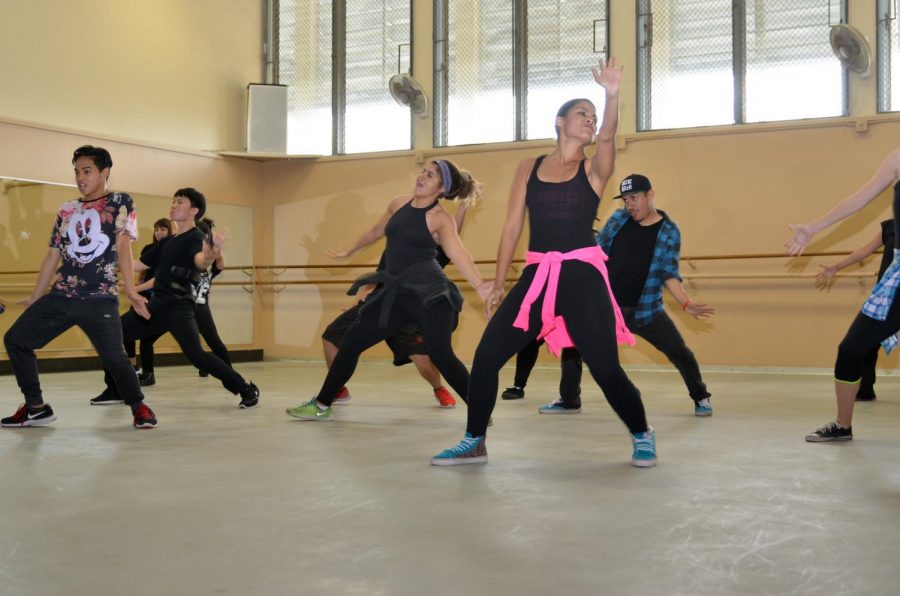The Mesa College Dance Department is trying its hand at creating a dance film this fall semester as an alternative performance in response to pandemic measures.
With safety being at the top of the list for students and faculty, Associate Professor Donna Flournoy and Assistant Professor Blythe Barton made an effort to implement strict-safety guidelines during the production of the film. According to Barton, the film will mostly consist of pre-recorded segments of dance, but arrangements to meet and film with dancers have been put into place.
Barton said that no more than two students will be present at each recording and that safety measures such as social distancing, mask wearing, and temperature taking will be enforced. She explained that these rules don’t affect the filming process: “I can set up a tripod and a camera, and then 20 feet away — 50 feet away, someone can be dancing.”
Dance film is a different playing field to the dance department, who has never created any productions of the sort according to Barton. Fortunately for them, she has spent an extensive amount of time working with this specific art form. Barton worked on dance film in her graduate studies and has been co-producing the 40 North Dance Film Festival for over four years.
The main difference between dance film and live performances is the choreographer’s control over what the audience consumes as explained by Barton. She said that dancers use the term “ephemeral,” to describe live performances. “Dance performance and choreography happens in a blink.”
Barton explained that dance film allows choreographers to use film techniques to emphasize a dance’s art form, opening up control to another artistic medium. “When you introduce the camera as a tool for choreographers, I’m saying, ‘audience, I want you look at this dancer moving here, and then I want you to see all the dancers moving there, and then I want you to just see this finger detail.’” She described the camera “as another layer of choreography.”
She emphasized a loss of the unique feeling of a live performance.
“An analogy might be sitting ringside at a basketball game, boxing match, or wrestling match and getting sweat on you, you feel the heat, the breath, the energy of those bodies.”
A theme for the film is in consideration which contrasts their usual live performances that often don’t have one Barton said. This is usually because she wants the choreographers to “express their freedom of artistry.”
The modern social and political context that this film is being produced in has brought on the consideration for a theme Barton expressed.
“The Black Lives Matter , Donna and I talked a lot about framing our ideas through the lens of uplifting of black voices.” The pandemic brought on ideas for a theme as well: “Something like ‘under the mask’ or ‘small spaces go big.’”
Barton said that even without a theme, these issues are bound to be expressed through dance. “Even if we don’t give it a theme, the art will be informed by the world we are living in. Because you just can’t separate it; you can’t separate humanity from humans, and dance is a great venue, because it’s the most tangible of the human art forms.”
The strict social barriers constructed by the modern pandemic were a matter that those in the dance department fully anticipated and tackled with tactical preparation. Discussions over the vision of the dance department for this fall semester began in April according to Barton. These discussions occurred between her and Flournoy in order to establish a plan of action. They then took it to the next steps: approval.
“We haven’t gotten any backlash because we went through the proper channels,” said Barton. These channels that the department passed through started at the dean of the dance department and the department chair. “With their support, we got them excited,” said Barton. They then presented their ideas to three vice presidents of Mesa College and proceeded with their plans.
The budget for this performance will be less than live performances in past semesters according to Barton. This is because the digital performance will exclude rental costs, staffing theater costs, and costuming. She said that the real costs will be the amount of time and effort put into learning something new.
“Our choreographers, our faculty, our dance staff are going to put blood, sweat, and time working in it. So that’s gonna be the big cost; learning something new, learning how to organize a digital dance concert.”
The department has not determined a date yet to present the film, but plans to release it within the first two weeks of December according to Barton.




